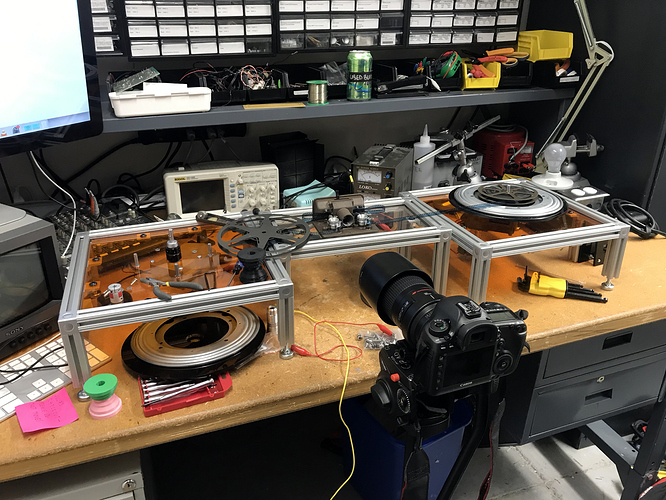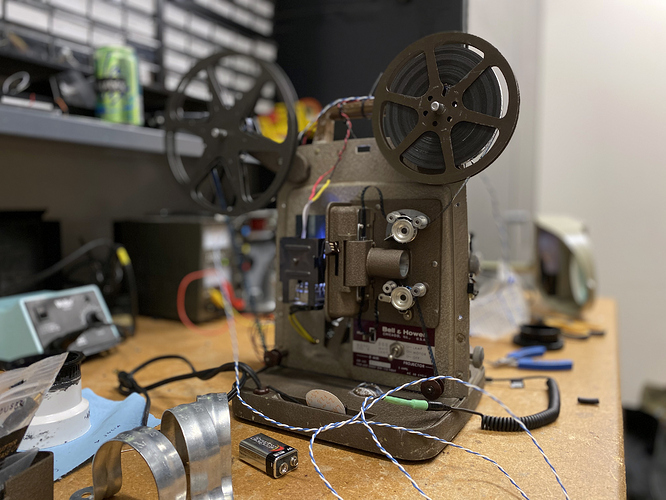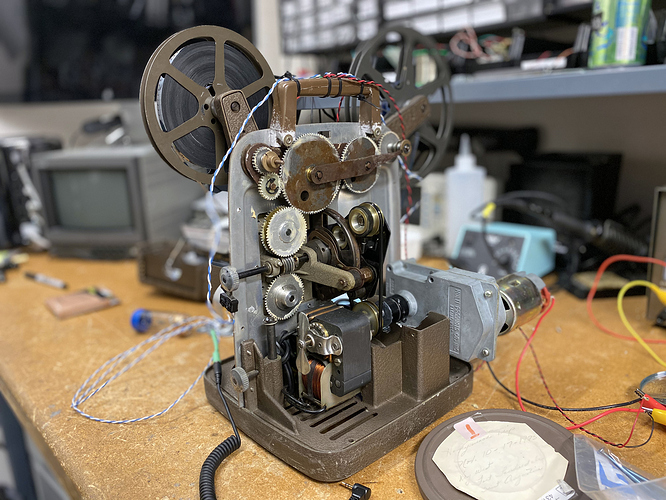Hi everyone, I’ve just discovered the site after scouring the web for information on my DIY Super 8 telecine project.
I’m particularly excited about finding the site as I was starting to worry that the ‘movement’ of online enthusiasts I enjoyed years ago was starting to disappear. I used to frequent filmshooting.com forums a lot, amongst others, but sadly that site seems to have disappeared taking a lot of useful information with it.
I started shooting film around 2007 when I found my Dad’s Super 8 camera in the loft. As a teenager I remembered watching his cine films as a child, but as camcorders (and life) took over, and the projector had packed up, it was years since we’d watched the movies he made and I’d forgotten the wonderful quality they possessed. Finding that camera and processing the half finished Kodachrome 40 roll inside (complete with purple footage of me as a baby!) kick started a love affair with reversal film for me, particular Kodachrome 40 in Super 8 and K64 for my newly purchased SLR camera.
I’ve been meaning to build a DIY telecine machine ever since, mostly to transfer my Dad’s old films as he has hours and hours of footage - almost all Kodachrome 40, much of it 200ft sound film. My own footage is pretty sharp as it’s shot with a Canon 814XL-S, but whatever I end up building, anything frame by frame will be better than what I’ve achieved so far as the only proper transfers I’ve done are off the wall with a HV20. I’ve got a few hours of footage myself now to transfer, and plenty of rolls of S8 Ektachrome 100D in the freezer from when I had the foresight to use the last bits of my student loan to panic buy back in 2009 
I got quite far a few years ago before work, marriage and a baby took over, and managed to modify a Eumig 610D with a widened gate, diffused LED light source and a hall effect sensor to trigger a mouse click which was more or less internet best practice at the time. The only hurdle was I couldn’t get a decent quality image by aiming the camcorder at a plano-convex lens, so decided at some point I was going to use a machine vision camera.
I’m really impressed at some of the efforts I’ve seen here and fascinated to see Raspberry PIs being used as well. I’ve used them in the past for things like VPN servers or TV backends, but wouldn’t have thought of doing any telecine with them.
I’m hoping to learn a bit more from the forum about how to a) get my current system working so I can at least start doing some telecine properly, and then b) how to iterate the system to eventually align more with the fab designs you guys are creating.
I’ve just ordered a Blackfly U3-23S6C-C and will need to figure out how to mount the Schneider 50mm/2.8 enlarger lens everyone is using. Then once that’s working and capturing video, next step probably figure out how to improve the light source to do HDR captures and get as much out of the sensor as possible.
I’m hoping I will be able to contribute back both by sharing my progress with others, and also by pioneering on transferring magnetic stripe sound. It seems fairly niche to have a lot of sound film to transfer (I’ve read sound film was 5% of S8 sales at best), but I’ve got a lot to transfer and there’s enough that it has to be done accurately. Roughly syncing it might work for a 3m20 reel, but for an hour long feature film that’d be a right pain! I have a lot of experience in audio production and post processing, but will need to do a lot of research in how to mechanically transfer the audio as I’ve none whatsoever there.
So yeh, happy to be here and hoping to learn and share a lot. I love the open source ethos and it’s great to see you guys creating a very friendly and accessible space to share ideas.



